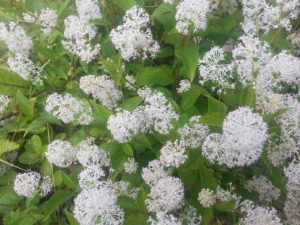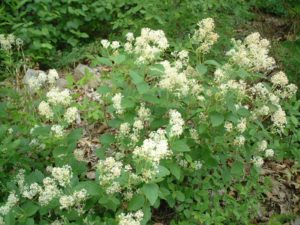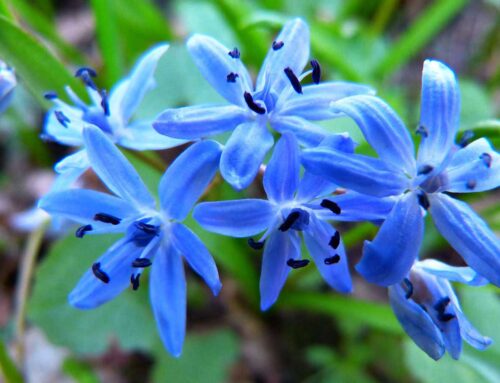Growing Beneficial Red Root
Sustainable Landscaping with Native Plants
New Jersey Tea, or red root, is a deciduous shrub native to New Jersey and makes for an appealing shrub and has plenty of health benefits and can be consumed as a tea. Red root is a fairly simple plant to tend to and will provide blooms towards the end of winter. New Jersey Tea is also a native plant to New Jersey, hence it’s name. Use of this shrub will also help with attracting various forms of wildlife into your lawn, mostly hummingbirds, while providing an interesting looking bloom in the late winter months.
When fully grown, red root will grow to be a height of around 2 to 4 feet with a spread of 3 to 5 feet. The branches of this shrub are thin and clusters of small, white-pinkish flowers will bloom on the tips around March. The base of red root is very woody and the upper-half consists of it’s beautiful branches that spread out. Aside from garden appeal, this plant’s bark, leaves, and roots all have separate medicinal qualities that have said to be very helpful in treating many types of health problems for hundreds of years.
Red Root Tea
When dried, the leaves of red root can easily be used as a beneficial caffeine free tea that can do wonders for your health and tastes reminiscent of black tea. During the American Revolution, many Americans drank red root tea rather than exported English tea. Native Americans have also used the root for alleviating problems like sore throats, fevers, bronchitis, and coughs. The root also contains a hypotensive attribute that can help lower hypertension. Red root also produces berries, but these are NOT edible.
Other Uses
The roots can also be harvested easily, by just digging them up in the spring when they turn a deep red. After cleaning and removing any dirt and grime, you can use the root to assist treating many health issues.
Red root can also be used to produce various shades of dyes. The blooms of the red root will yield a green color, while the rest yields a color similar to the shade of cinnamon. The roots of the plant yield a red shade dye. Red root flowers contain elevated amounts of saponins, and can be used as a lather to clean yourself with when squashed and put in water. It can make for an effective, organic soap and can either be used to wash clothes with or used as a body wash.
Propagation
Red root plant prefers a warm and sun lit spot, though it can endure semi-shaded positions. Red root prefers limestone or sandy soils, and can even do well in bone-dry spots. Notwithstanding, plants of this species despise any sort of aggravation to their underlying foundations and, subsequently, it is prudent that you straightforwardly plant them outside in changeless areas when they are youthful. This plant loathes overwhelming pruning thus you ought to not cut any wood from the plant that is longer than a pencil. In the event that despite everything you have to prune the plant, it’s best done during the spring months.
Red root quickly begins blossoming while the plants are youthful. Typically, the red root plant begins blooming in their second year at the start of spring. In addition, red root plants additionally hybridize great with different plants having a place with similar variety. Various plants having a place with this sort likewise share a cooperative and beneficial relationship with particular microorganisms in the dirt and they eventually become lumps on the plant roots and helps with fixing nitrogen from the air.
The red root plant is typically grown by seeds. The red root seeds should be sown in a cool frame promptly after they develop and mature. In the event that you are utilizing stored seeds, make sure you absorb them in warm water for around 12 hours and place them in cool stratification at 1°C for any time between one to three months. Ordinarily, it will take around one to two months for the seeds to develop, if kept at 20°C.
There are plenty of beneficial and great useful ways to utilize red root. From it’s amazing medical properties to it’s gorgeous spring-time blooms, red root is a perfect plant to choose to grow this year for any black tea lovers, or for someone looking for a gorgeous shrub to fill an area in your yard. There are many practical uses for this plant, and it’s a must grow if you are able to.
Lincoln Landscaping “The Natural Choice”
Mike Kolenut President & CEO
https://lincolnlandscapinginc.com
(201) 848-9699









